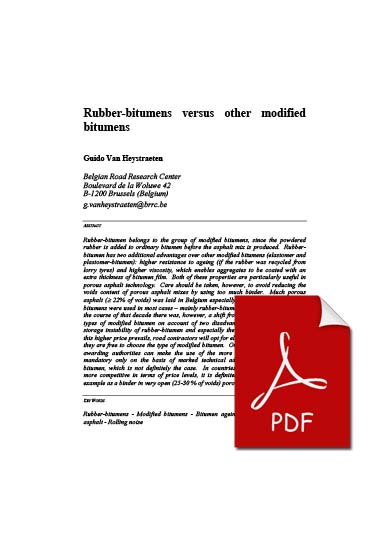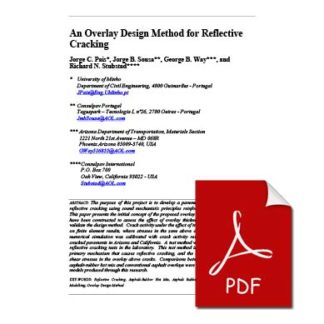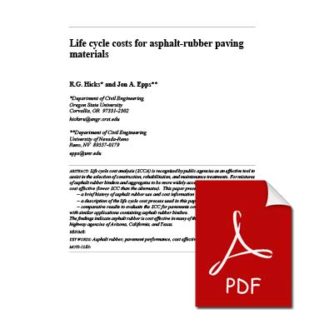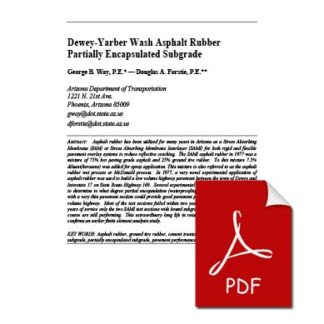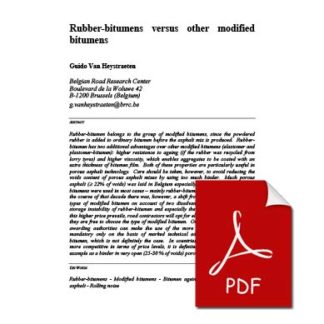Description
Rubber-bitumen belongs to the group of modified bitumens, since the powdered rubber is added to ordinary bitumen before the asphalt mix is produced. Rubber-bitumen has two additional advantages over other modified bitumens (elastomer and plastomer-bitumen): higher resistance to ageing (if the rubber was recycled from lorry tyres) and higher viscosity, which enables aggregates to be coated with an extra thickness of bitumen film. Both of these properties are particularly useful in porous asphalt technology. Care should be taken, however, to avoid reducing the voids content of porous asphalt mixes by using too much binder. Much porous asphalt (≥ 22% of voids) was laid in Belgium especially in the eigthies. Modified bitumens were used in most cases – mainly rubber-bitumen in the early eighties. In the course of that decade there was, however, a shift from rubber-bitumen to other types of modified bitumen on account of two disadvantages: the greater risk of storage instability of rubber-bitumen and especially the higher price. As long as this higher price prevails, road contractors will opt for elastomer-bitumen whenever they are free to choose the type of modified bitumen. On the other hand, contract-awarding authorities can make the use of the more expensive rubber-bitumen mandatory only on the basis of marked technical advantages over elastomer-bitumen, which is not definitely the case. In countries where rubber-bitumen is more competitive in terms of price levels, it is definitely to be recommended for example as a binder in very open (25-30 % of voids) porous asphalt mixes.

